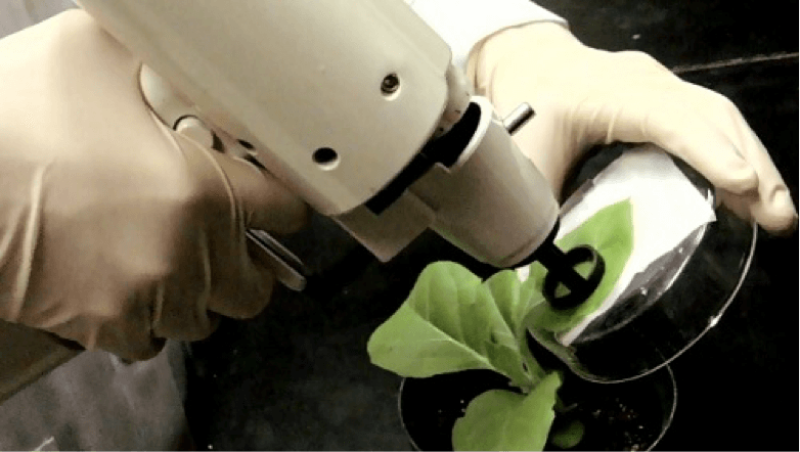A plywood-mounted transformer, a voltmeter-equipped wand and a pair of bulbous vacuum tubes might appear to be just a random collection of components. But Brian Martinell and Dennis McCabe turned them into a tool that would revolutionize plant breeding and help usher in genetic engineering in agriculture. Their gene gun prototype is now displayed at the Smithsonian’s National Museum of American History.
The Agracetus researchers invented the device in 1986, and it played an integral role in the development of Roundup Ready soybeans and biotech crops.
…
The first prototype didn’t have switches, so the scientists manually touched wires to electric terminals to create a high-voltage shock to transform a water droplet into a shock wave that drove DNA-coated microparticles of gold into plant tissue.
Robb Fraley, former executive vice president and chief technology officer at Monsanto, helped the company develop a strain of bacteria containing genes that would make plants resistant to glyphosate, the active ingredient in Roundup herbicide. Even though Monsanto was working with Agrobacterium to deliver genes of interest into host plants, Fraley indicated the Agracetus gene gun was more efficient at inserting the glyphosate-resistance gene into soybean plants at the time.
Monsanto produced the first Roundup Ready soybeans in 1989, which were commercialized seven years later.































